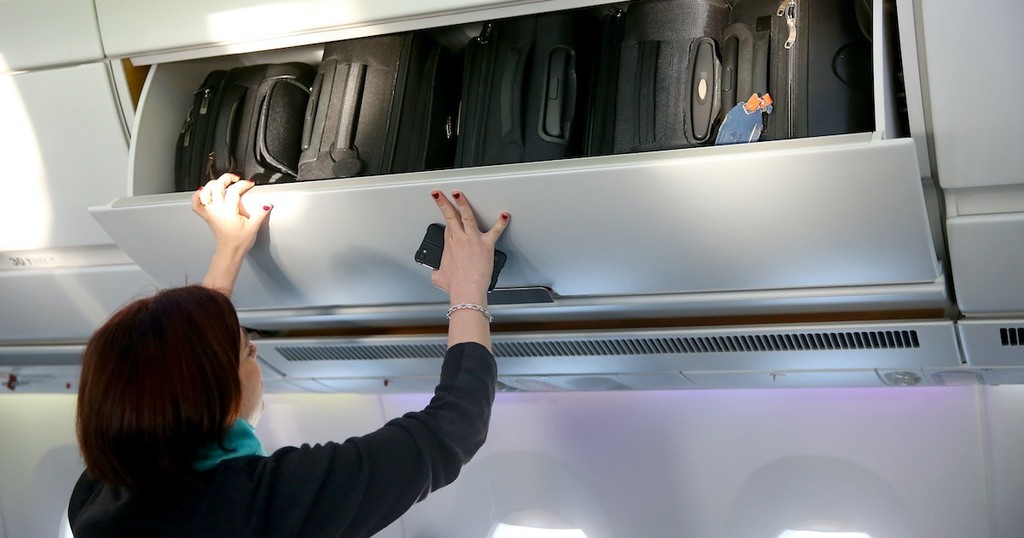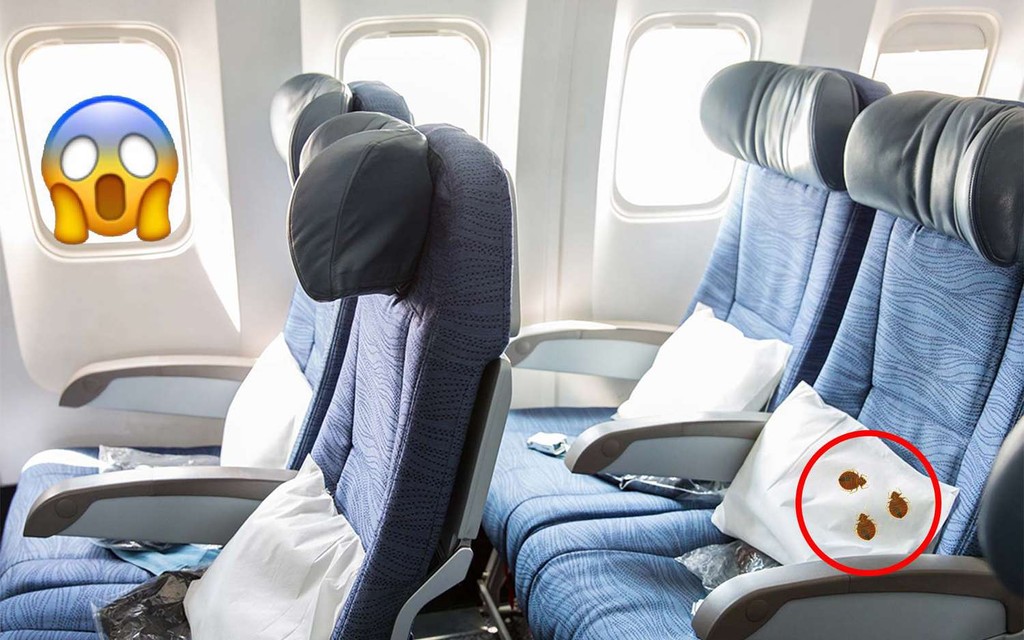I have some bad news for you if you prefer traveling via an airplane because you think they are safe. Even though they are called ‘bed’ bugs, these creepy critters do not limit themselves to homes, apartments, and other residential areas. Bed bugs in airplanes are not prevalent, but you are not entirely safe while on a flight.
Recent statistics reveal that 19% of US public transportation, including flights, has bed bugs. You can stay safe while on a flight by spending a little time reading this! This post offers comprehensive expert tips to help avoid getting bed bugs in airplanes.
Table of Contents
Can You Get Bed Bugs On An Airplane?
Yes, you can get bed bugs on an airplane, but cases on planes are not prevalent. Over the years, the media has reported some cases of bed bugs on flights. For example, a Forbes article states that a passenger on an overnight British Airways flight from Vancouver to London, Heather Szilagyi, saw some bed bugs on her seat. Her attempts to complain to the flight attendants were fruitless since she could not relocate because the airplane was fully packed. She and her eight-year-old daughter endured physical and psychological pains throughout the flight.
We all hope that international flights don’t have bed bugs, but we end up disappointed sometimes. Two passengers from New York to India complained of bedbug bites. The airline issued an apology statement.
“Air India is deeply concerned with a few reports of ‘bugs’ causing inconvenience to its esteemed passengers. We view the issue seriously, and every possible step is being taken to closely inspect and strengthen our system to ensure that such isolated incidents of passenger discomfiture do not affect our consistent performance.”
Based on the abovementioned cases, you cannot rule out British Airways and Air India and assume that you will be safer with other airlines. Most airlines face infestation issues and are keen on exterminating them.
Spotting bed bugs in an Airplane
You can easily spot bed bugs in an Airplane since they are visible to the naked eye. Adult bed bugs are dark yellow, red, or brown and the size of an apple seed spanning about 5mm. The pesky creatures will prey on you while you are sleeping or relaxing on your Airplane couch. Bed bugs prefer to attack when you are sitting than when you are moving. You will feel their movement on your skin as they peruse for blood.
Bed bugs are very good at hitchhiking in sit frames, mattresses, clothing, furniture, and compartments. Bed bug bites are itchy and would leave a red spot on your skin which can be allergic to some people.
If you find blood Stains on your clothing while traveling, it’s an indication that you might be in the company of pesky passengers. The blood stains are due to blood-sucking processes, which leave behind minor stains on clothes. Also, you can find blood stains on your clothing if you accidentally crush bed bugs while positioning.
You can also suspect the presence of bed bugs in your airplane if you notice a musty smell with no apparent source. As bed bugs settle, they emit pheromones that smell to some people. However, if the infestation is significant, pheromone mixes with the smell of crushed bugs and their fecal excrement, making the smell unpleasant.
You must understand that seeing it is the only solid confirmation of bedbug presence. The signs will only help to up your bedbug guard and keen search for it within your seat and cabin. You can find exoskeletons that vary in size depending on the nymph stage.
How bed bugs get on to Airplanes
Bed bugs are predominantly hitchhikers. They get in through travelers’ luggage and personal belongings. These pesky critters will move out of their hiding zones and jump into airplane storage facilities. Once at the airplane, they lay eggs and multiple while others hitchhike into travelers’ belongings. Bed bugs can also get into planes through infested cargo. These creatures hide in cargo, and once the journey commences, they crawl out in search of food and warmth.
Bed bugs are challenging to deal with, and some people are unaware they have them. Such individuals unknowingly carry bed bugs everywhere they go, and airplanes are no exception. However, the fear of bed bugs should not deter your traveling objectives. You must know how to avoid getting bed bugs and travel safely despite their infestation. These are not rocket science but a few safety procedures you usually use at home to prevent bed bugs.
How to Avoid Getting Bed Bugs In An Airplane
There is no full-proof way of protecting yourself against bed bugs. Nonetheless, the following tips can reduce the risk of getting bed bugs in an airplane:
Always be aware of your surrounding
Prevention is better than cure. This is the best way to protect yourself and your properties against bed bug infestation. Once you board the airplane, take your time to examine your seat, luggage areas, and nearing airplane facilities while you await the departure. As you do this, examine bed bugs’ signs, such as shells, dark spots, excrement, or the bedbug itself.
You will find the bedbug itself or satisfactory evidence of its presence to raise the alarm. Finding a single bedbug can indicate an infestation, and you should act immediately. They could be more hiding. Notify the airplane staff of your query and request another seat should you find bed bugs.
Bring your comfort amenities
Your comfort amenities should be trusted. Simply examining airplane-issued blankets isn’t enough. While you can see mature bed bugs with your naked eyes, their ones and their eggs are challenging to identify. You’ll cover yourself with young bed bugs and eggs that blend with your belongings. Despite looking clean, they pose so much threat, and you will undoubtedly take pesky critters home unknowingly.
It would be best if you use white-colored comfort amenities as they would make it easier to identify crawling critters. Light colors would also be beneficial since you would identify blood spots should you accidentally crush some bed bugs.
Use a seat cover
The seat cover will be a barrier between you and the airplane seat. Adding a hard cover is best if you want to up your bed bug protection mechanisms. Covering the entire seat will limit your contact bedbug with the creepy critters.
Wrap your belongings in plastic
You can’t get a seat cover for your belongings, but plastic bags can help. Ensure that you wrap all your personal belongings in a plastic bag. The plastic bag will prevent bed bugs at the airplane from crawling into your belongings. This step is necessary as bed bugs love to hitchhike in belongings, especially those made with fabric.
Don’t bring your belongings into the house before inspecting them
Upon arrival at your destination, you should carefully unpack your belongings outside the airplane. Inspect the seat covers, comfort amenities used, and plastic bags for any bedbug signs. If you find any infestation signs, pack your protective covers in a plastic bag and wrap them. Personal belongings should be removed only if no bed bug sign was identified.
Avoid taking personal belongings to your house before inspecting since you risk taking bed bugs home too.
Deep clean everything when you get home
It would be helpful to clean everything you took home on the flight. Bedbug eggs and their young ones are incredibly challenging to spot with the naked eye. Deep cleaning would spice up your bedbug protection by exterminating immature bed bugs and their eggs.
Deep cleaning your clothes with a washing machine and dryer after a flight is essential to prevent bed bugs.
Final Thoughts
Although reports of bed bugs in airplanes are rare, you can still get bed bugs on an aircraft. Even a single bedbug in your home can make your life a nightmare. Therefore, you must take all the necessary precautions to avoid getting bed bugs in an airplane. The key takeaways from this post on how to protect yourself are:
- Bring your comfort amenities
- Use a seat cover
- Wrap your belongings in plastic
- Don’t bring your belongings into the house before inspecting them
- Deep clean everything when you get home
FAQs
How common are bed bugs on airplanes?
The odds of bed bugs on flights are extremely rare.
Can you relocate your airplane seat if it has bed bugs?
You can relocate your airplane seat only when it is not fully packed.
Can you sue an airline for bed bug bites?
Yes. You can sue an airline for a bed bug bite and earn compensation for your damages.
What do airlines do when they receive complaints concerning bed bugs?
Generally, there is a list of things an airline does when it receives complaints. These are:
- Issue an official apology to its customers.
- Investigate the raised claims
- Temporarily ground the airplane in question if found to have bed bugs
- Employ the services of Extermination Company to deep clean and treat the aircraft.


